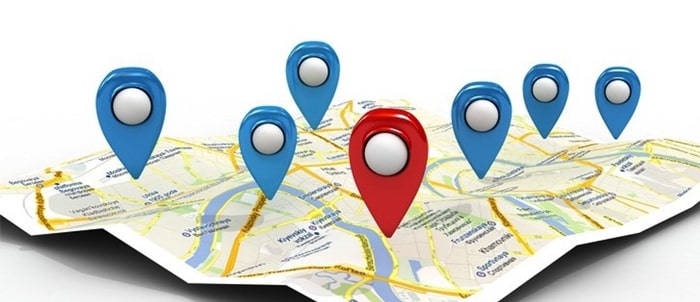Overview of Location-Based Services
Location-based services refer to a type of mobile application that uses geolocation technologies to detect the physical location of a mobile device and deliver tailored services based on that information. Some key capabilities of Location-Based Services include identifying the current location of a user, tracking the location of the device as the user moves, and providing location-specific information and functionality in real-time.
Major categories of Location-Based Services apps include social and sharing, navigation, local search and information, commerce and payments. Popular apps like Foursquare, Yelp, Uber and Google Maps all utilize precise geolocation to offer services and connections relevant to a user’s current physical surroundings. As location detection technologies have improved in mobile devices, the market for Location-Based Services has grown rapidly to power a wide variety of everyday tasks.
Key Technologies Enabling Location-Based Services
In order for Location-Based Services apps to function accurately, mobile devices need integrated systems capable of determining geographical coordinates. The most common technologies used for location detection today include GPS, Wi-Fi positioning, cell tower triangulation and Bluetooth beacons.
GPS relies on signals from orbiting satellites to pinpoint a device’s latitude and longitude. It provides outdoor precision down to about 10 meters but doesn’t work well indoors or in dense urban areas where signals are weak. Wi-Fi positioning matches a device to nearby Wi-Fi access points and analyzes signal strengths to estimate location. Cell tower triangulation uses the geographic locations of nearby cell towers a device is detecting. By calculating signal strength and transmission times between towers, an approximate position can be calculated within hundreds of meters.
Bluetooth beacons are low energy Bluetooth transmitters placed strategically throughout indoor spaces like malls, airports, stores and venues. They work in tandem with specialized apps to precisely position devices within 1-2 meters. When combined together through device sensors and algorithms, these various technologies can provide seamless indoor-outdoor location detection capabilities for Location-Based Services.
Rise of Location-Based Social Networks
One of the first major successes of Location-Based Services platforms was the 2010 launch of Foursquare, which popularized the concept of “checking in” to real world locations on a digital map. This allowed users to share their position with friends, unlock virtual badges and compete for mayorship titles of frequented venues. Foursquare paved the way for other location-centric social apps like Swarm, Meetup and Nextdoor to take off.
Together with image-sharing apps like Instagram, Snapchat and Facebook, location-sharing became a core part of interacting virtually while out in physical spaces. Users enjoy discovering friends nearby, tips about new places from locals, and finding upcoming events based on their current location. Location-Based Services networks also benefit businesses by driving foot traffic and new customers through targeted recommendations and special deals visible to nearby app users. Check-ins provide a wealth of insights on patterns of movement through an area.
Emergence of Hyper-Localized Mobile Advertising
As more user location data became available, Location-Based Services opened up opportunities for hyper-localized digital advertising tied to physical places. When a potential customer enters a certain geographic area like a shopping mall or their neighborhood, relevant and timely ads can be delivered directly to their mobile device. This proved to be appealing for local businesses looking to better attract customers within a small radius.
In addition to static geo-fence boundaries, advertisers can now send push notifications and display ads only when app users are in motion towards or passing by a particular street address. Precise on-location targeting aligned with consumer movement patterns delivers unparalleled relevance compared to traditional broadcast methods. Top Location-Based Services ad platforms like Foursquare, Snapchat and Facebook provide analytics to measure foot traffic driven by these ads as well.
Growth of On-Demand Delivery Services
One of the most visible applications today integrating advanced location services is the on-demand economy centered around food, grocery and product delivery. Services like DoorDash, Instacart and Postmates utilize a combination of GPS, geofencing and real-time mapping to power the entire order fulfillment process from both the customer and merchant/driver side.
Customers simply enter their address or pick a nearby location to view available items. As orders are placed, the nearest available driver is assigned and navigated towards the merchant to quickly pick up and deliver the items, tracking their progress every step of the way. Restaurants have benefited tremendously through expanded reach beyond their usual delivery zones. Location-Based Services plays a critical role in enabling the convenient, real-time on-tap delivery model that has become a lifeline during the current pandemic.
Future Outlook for Location Services
Looking ahead, Location-Based Services has significant potential in new areas like indoor navigation, connected cars, augmented/virtual reality, IoT and smart cities. Advancements in technologies like Ultra Wideband for precise short range, 5G for responsive low latency and computer vision for visual locationing will unlock even more immersive experiences. Self-driving vehicles and autonomous delivery bots will rely on highly accurate, real-time positioning data.
Integrated indoor/outdoor mapping with details of building layouts will transform how people navigate complicated public spaces. Location-aware AR will overlay contextual information directly onto live camera views. Location-Based Services will also play a growing role in logistics, public safety, healthcare and urban infrastructure. As precision and seamless transitions between environments improve, users can expect location to serve even more behind-the-scenes functions powering our digital and physical interactions.
*Note:
1. Source: Coherent Market Insights, Public sources, Desk research
2. We have leveraged AI tools to mine information and compile it


